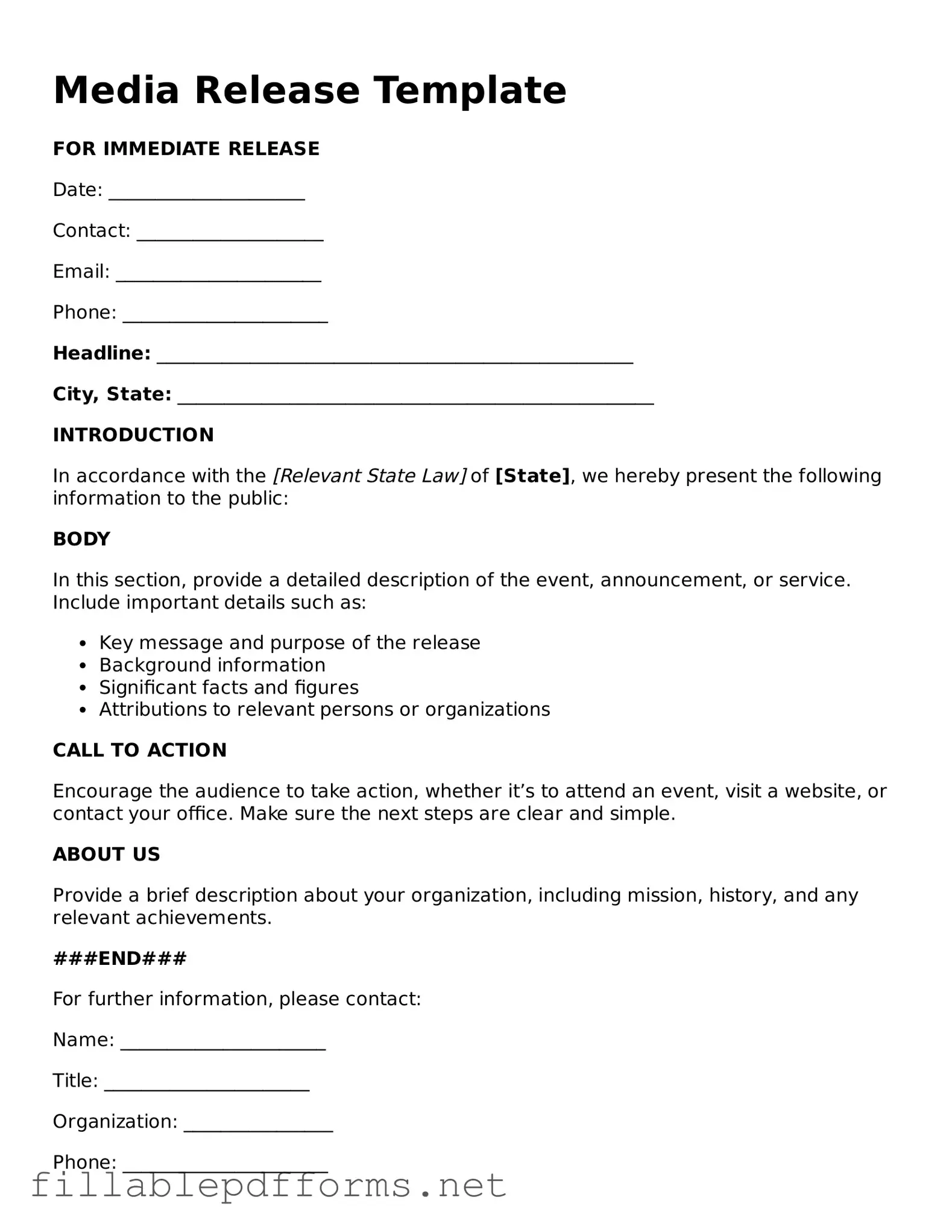In today's world, where sharing information and images is easier than ever, the Media Release form plays a crucial role in protecting individuals' rights while facilitating the use of their likenesses and personal information. This form is designed to grant permission for the use of photographs, videos, or other media that feature a person, ensuring that consent is obtained before any public distribution occurs. It typically includes details such as the name of the individual granting permission, the specific media being released, and the intended use of that media, whether for promotional purposes, educational content, or other forms of distribution. Additionally, the form often addresses issues related to compensation, duration of the agreement, and the rights of the individual concerning the use of their image. By understanding the components and implications of the Media Release form, individuals can navigate the complexities of consent and privacy in an increasingly interconnected society.
